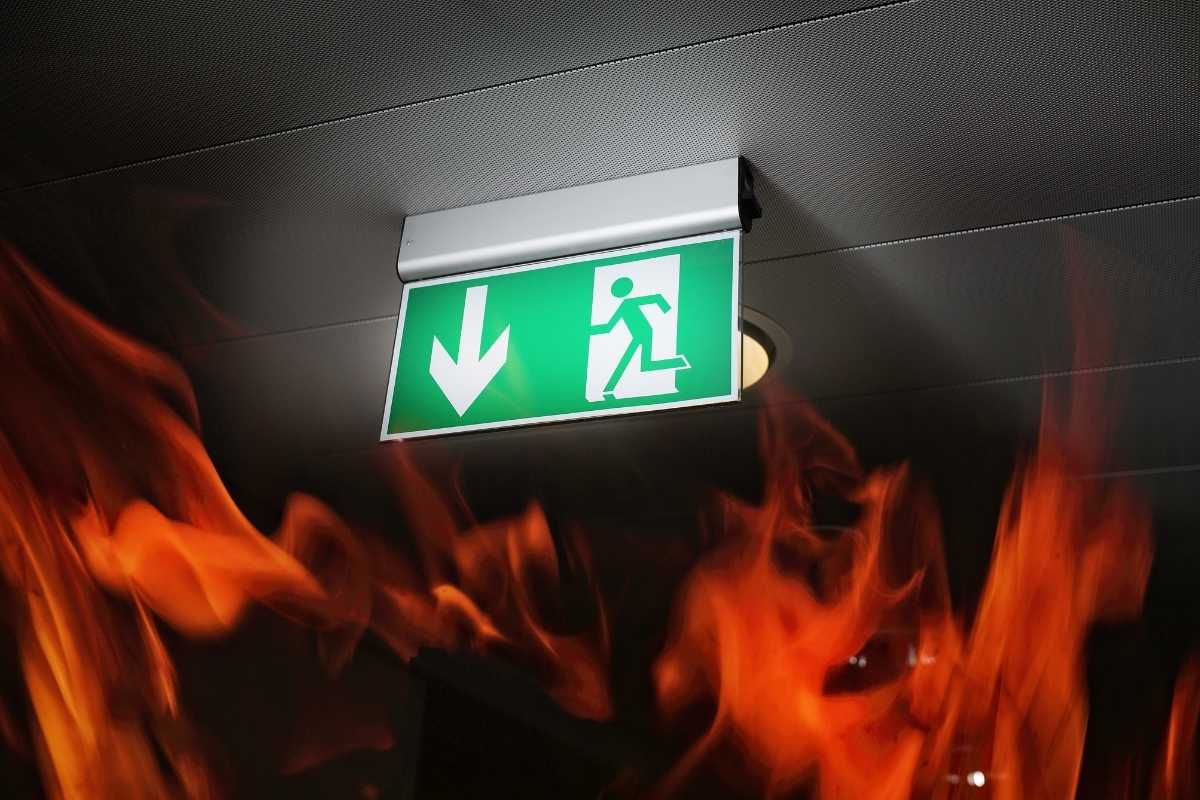Managing Fire Safety Hazards
The management of the workplace and the way people use it will influence your evaluation of fire risk. Management may be your responsibility alone or there may be others, such as the building owners or managing agents, who also have responsibilities. In multi-occupied buildings all those with some control must co-operate and you need to consider the risk generated by others in the building.
How Can Fires Occur?
The chances of a fire starting will be low if your premises have few ignition sources and combustible materials are kept away from them. In general, fires start in one of three ways:
- accidentally, such as when smoking materials are not properly extinguished or when lighting displays are knocked over
- by act or omission, such as when electrical office equipment is not properly maintained, or when waste packaging can accumulate near to a heat source; and
- deliberately, such as an arson attack involving setting fire to external rubbish bins placed too close to the building.
Look critically at your premises and try to identify any accidents waiting to happen and any acts or omissions which might allow a fire to start. You should also look for any situation that may present an opportunity for an arsonist.
What is the Risk to People?
It is unlikely that you will have concluded that there is no chance of a fire starting anywhere in your premises so you now need to evaluate the actual risk to those people should a fire start and spread from the various locations that you have identified.
While determining the possible incidents, you should also consider the likelihood of any incident; but be aware that some very unlikely incidents can put many people at risk. To evaluate the risk to people in your premises, you will need to understand the way fire can spread.
Fire is spread by three methods:
- Convection
- Conduction
- Radiation
Smoke produced by a fire also contains toxic gases which are harmful to people. A fire in a building with modern fittings and materials generates smoke that is thick and black, obscures vision, causes great difficulty in breathing and can block the escape routes.
It is essential that the means of escape and other fire precautions are adequate to ensure that everyone can make their escape to a place of total safety before the fire and its effects can trap them in the building.
In evaluating this risk to people, you will need to consider situations such as:
- fire starting on a lower floor affecting the only escape route for people on upper floors or the only escape route for people with disabilities
- fire developing in an unoccupied space that people must pass by to escape from the building
- fire or smoke spreading through a building via routes such as vertical shafts, service ducts, ventilation systems, poorly installed, poorly maintained, or damaged walls, partitions and ceilings affecting people in remote areas
- fire starting in a service room and affecting hazardous materials
- fire spreading rapidly through the building because of combustible structural elements and/or large quantities of combustible goods
- rapid vertical fire spread in racked displays
- fire and smoke spreading through a building due to poor installation of fire precautions, e.g. incorrectly installed fire doors or incorrectly installed services penetrating fire walls; and
- fire and smoke spreading through the building due to poorly maintained and damaged fire doors or fire doors being wedged open.
How do I Reduce the Fire Hazard?
Having identified the fire hazards, you now need to remove those hazards if reasonably practicable to do so. If you cannot remove the hazards, you need to take reasonable steps to reduce them if you can. This is an essential part of fire risk assessment and as a priority this must take place before any other actions.
Ensure that any actions you take to remove or reduce fire hazards or risk are not substituted by other hazards or risks. For example, if you replace a flammable substance with a toxic or corrosive one, you must consider whether this might cause harm to people in other ways.
Removing Sources of Oxygen
You can reduce the potential source of oxygen supplied to a fire by:
- closing all doors, windows and other openings not required for ventilation, particularly out of working hours
- shutting down ventilation systems which are not essential to the function of the premises
- not storing oxidising materials near or with any heat source or flammable materials
- controlling the use and storage of oxygen cylinders, ensuring that they are not leaking, are not used to ‘sweeten’ the atmosphere, and that where they are located is adequately ventilated.
Removing Ignition Sources
There are various ways that you can reduce the risk caused by potential sources of ignition, for example:
- Wherever possible replace a potential ignition source by a safer alternative.
- Replace naked flame and radiant heaters with fixed convector heaters or a central heating system. Restrict the movement of and guard portable heating appliances.
- Separate ignition hazards and combustibles e.g. ensure sufficient clear space between lights and combustibles.
- Operate a safe smoking policy in designated smoking areas and prohibit smoking elsewhere.
- Ensure electrical and mechanical and gas equipment is installed, used, maintained and protected in accordance with the manufacturer’s instructions.
- Check all areas where hot work (e.g. welding) has been carried out to ensure that no ignition has taken place, or any smouldering materials remain that may cause of fire.
- Ensure that no-one carrying out work on gas fittings which involves exposing pipes that contain or have contained flammable gas uses any source of ignition such as blowlamps or hot-air guns.
- Take precautions to avoid arson.
Removing Fuel Sources
There are various ways that you can reduce the risks caused by materials and substances which burn, for example:
- Reduce stocks of flammable materials, liquids, and gases on display in public areas to a minimum. Keep remaining stock in dedicated storerooms or storage areas where the public are not allowed to go, and keep the minimum required for the operation of the business.
- Ensure flammable materials, liquids, and gases, are kept to a minimum, and are stored properly with adequate separation distances between them.
- Keep areas containing flammable gasses ventilated.
- Do not keep flammable solids, liquids, and gases together.
- Remove, or treat large areas of highly combustible wall and ceiling linings, e.g. polystyrene or carpet tiles, to reduce the rate of flame spread across the surface.
- Develop a formal system for the control of combustible waste by ensuring that waste materials and rubbish are not allowed to build up and are carefully stored until properly disposed of, particularly at the end of the day.
- Take action to avoid storage areas being vulnerable to arson or vandalism.
- Check all areas where hot work (e.g. welding) has been carried out to ensure that no ignition has taken place and no smouldering or hot materials remain that may cause a fire later.
Reducing Risk to People
Having evaluated and addressed the risk of fire occurring and the risk to people (preventative measures) it is unlikely that you will be able to conclude that no risk remains of fire starting and presenting a risk to people in your premises.
You now need to reduce any remaining fire risk to people to as low as reasonably practicable, by ensuring that adequate fire precautions are in place to warn people in the event of a fire and allow them to safely escape.
The level of fire protection you need to provide will depend on the level of risk that remains in the premises after you have removed or reduced the hazards and risks.
Conclusion
The objective should be to reduce the remaining risk to a level as low as reasonably practicable. The higher the risk of fire and risk to life, the higher the standards of fire protection will need to be.
Your workplace may not exactly fit the solutions suggested in this article and they may need to be applied in a flexible manner without compromising the safety of the occupants.
Our Chief Fire Warden course as well as our Fire Safety Advisor and Facility Fire Safety courses provide more guidance.
If you would like to know more or would like our assistance in the areas mentioned check us out at www.intrinsicsafety.com.au. Alternately, call us on 1300 990 336 or email us at [email protected]



